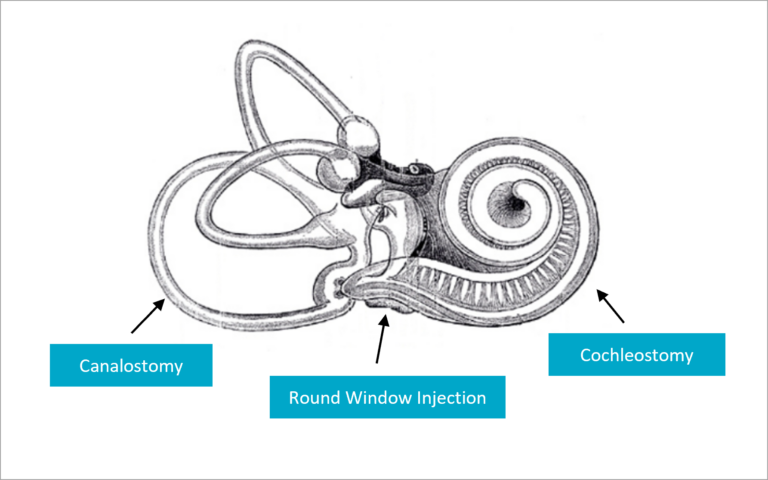surgery
At the core of our work lies deep-seated expertise in inner ear surgery. We’re dedicated to advancing the frontiers of auditory research & development by rigorously exploring and refining surgical techniques that hold the potential to change lives. Our focus on preclinical in vivo experiments allows us to develop, perfect, and validate innovative procedures, such as cochlear implantation and stereotaxic surgeries on the auditory cortex, which bridge the gap between experimental breakthroughs and their clinical application.
inner ear surgery for drug and biotherapy administration
We specialize in microsurgery techniques to deliver novel therapeutics into the inner ear. We work across a broad age range, from newborns to adults, ensuring that our procedures are tailored to the specific needs and stages of development.
Learn more about intracochlear delivery (delivery capabilities / intracochlear)
cochlear implantation
Cochlear implants offer significant benefits for children and adults with severe to profound hearing loss. Remarkable developments of these devices have been made possible as a result of a close collaboration of audiologists, engineers, and ENT surgeons, who never stop innovating: individualization, miniaturization of electronic components, use of mobile applications; these are all on their way to becoming the standard of care for tomorrow.
The greatest challenge of cochlear implants is in preserving cochlear structure and residual neurosensorial cells to meet the following objectives:
- Improving the duration and performance of the device (impedance monitoring)
- Assessing combinations with therapeutics of interest for cochlear protection
- Ensuring safety with the prevention of fibrous tissue & new bone formation around the electrode array
CILcare offers robust in vivo models to assess the efficacy & safety of cochlear implants. Full-sized implants, as well as surgical approaches, can be evaluated on functional outcomes such as ABR, as well as histological markers for residual hearing including intracochlear fibrosis.
Surgery procedures

Main read-outs
- Measurement of ABR to assess the impact of the implant on overall cochlear function and on the related surgery with no implant
- Measurement of impedance to assess the proper functioning of the electrode array
- Cochlear implant programming using Auto-NRT* thresholds
- Histology: cochleogram, distribution of the fibrotic tissue with trichrome staining
*Neural Response Telemetry
brain electrode implantation
Promising results have been reported on cochlear implant technology combined with innovative drug therapies, opening doors to exciting possibilities in auditory healthcare.
Combination of cochlear implant with drug-eluting electrodes are designed not only to stimulate the auditory nerve, but also to mitigate inflammation and inhibit the development of fibrous tissue surrounding the electrode array.
Our accomplished surgeons, impeccably trained in electrode implantation and microsurgery techniques, and skilled in electrophysiology assessment, are at the forefront of these groundbreaking endeavors.
other otic surgeries
- Tympanoplasty: surgical procedure performed to repair a perforated tympanic membrane
- Tympanostomy tube insertion: common surgical procedure in which tiny tubes are inserted through the tympanic membrane to provide a temporary artificial ventilation pathway and to drain fluid. The tubes are typically designed to naturally fall out over time as the eardrum heals
- Myringotomy: small incision in the tympanic membrane to drain fluid from the middle ear